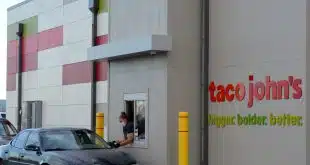After years of torrid growth, the automated clearing house's electronic-check code for lockbox payments has seen its expansion slow almost to a halt. The second-quarter numbers in the accounts-receivable conversion (ARC) standard entry class (SEC) could be just a blip, or they may reflect a permanent shift toward non-paper bill payments, according to payment industry executives. Herndon, Va.-based NACHA, governing body of the ACH, reports that ARC generated 669.8 million transactions in the second quarter, down 4.8% from 703.8 million in the first quarter and up only 2.7% from 652.4 million in 2007's second quarter. That's in sharp contrast to ARC's 24% growth rate in all of 2007. Billers such as credit card issuers, utilities, and others use ARC to convert to electronic transactions the paper checks consumers send to their payment centers. ARC, which went live in March 2002, could be subject to seasonal patterns, notes Janet O. Estep, NACHA's president and chief operating officer, who points out a similar sequential decline from the first to the second quarter of 2007. “The whole network is relatively flat; this may not be something that may be overly different,” she tells Digital Transactions News. “What we are trying to do is take a closer look at our data to see if there are any underlying trends.” Total ACH volume, excluding on-us transactions, rose just 0.9% to 3.74 billion transactions in the second quarter from 3.71 billion in the first. Volume was up 8% from 3.46 billion transactions in 2007's second quarter. Credit card issuers, some of the nation's biggest billers and ARC generators, are taking fewer checks and encouraging cardholders to use online bill-pay, says Estep. Stuart Williams, director of payment services at processor Fiserv Inc.'s CheckFree bill-pay unit, says ARC's recent numbers could show the maturing of e-checks as the overall volume of paper checks written continues to decline. According to the Federal Reserve's most recent payments study, checks paid fell from 41.9 billion in 2000 to 30.6 billion in 2006. “ARC reflects the overall trend that we know is true for checks in general,” Williams says. He also notes that ARC is an e-check code that could be negatively impacted by concerted biller and bank marketing efforts to get consumers to change their payment behavior, such as the NACHA-led PayItGreen Alliance. Standing in at least temporary contrast to ARC's decline is growth in WEB, the current SEC code for Internet ACH payments, the vast majority of which are bill payments. WEB grew nearly 22% year-over-year in the second quarter, though only 1.6% quarter-to-quarter?still higher than the ACH overall. Unlike ARC transactions, WEB payments don't start out as paper transactions. “Perhaps consumers are finding ways to pay for things without taking [their checkbooks] out,” Estep says. WEB's transaction numbers were 505.6 million in the second quarter versus 497.9 million in the first, and 416 million in 2007's second quarter. CheckFree, meanwhile, delivered 73.6 million e-bills through its bank and biller-direct networks in the second quarter, a spokesperson says. Through 2008's first six months, CheckFree delivered 145 million e-bills, up 22% year-over-year. The newest e-check code, back-office conversion, or BOC, which went live in March 2007, grew 146% to 9 million transactions in the second quarter versus 3.67 million in the first. Volume was up more than 3,500% from a year earlier, just after launch. One analyst recently reported that the much-heralded BOC wouldn't be quite the hit predicted earlier because retailers have adopted the Point-of-Purchase (POP) e-check code more than expected (Digital Transactions News, Sept. 4). The fortunes of any particular e-check code matter less than overall network usage, says Estep. “It's important that the different SEC codes all use the ACH network,” she says. “From the NACHA perspective, it's not a question of is one better than the other, will one win out over the other. The different SEC codes provide different value for different participants with different needs.”
Check Also
Priority Revenue up 14% and other Digital Transactions News briefs from 3/6/25
Processor Priority Technology Holdings reported fourth-quarter 2024 revenue of $$227.1 million, up 13.9% year-over-year. Revenue for the …




